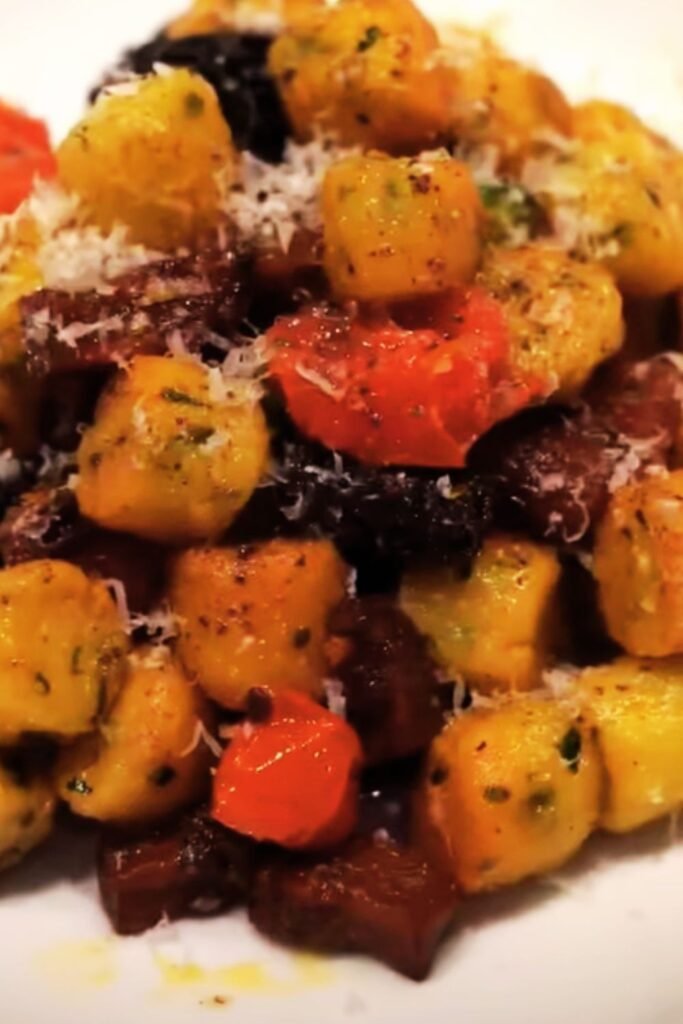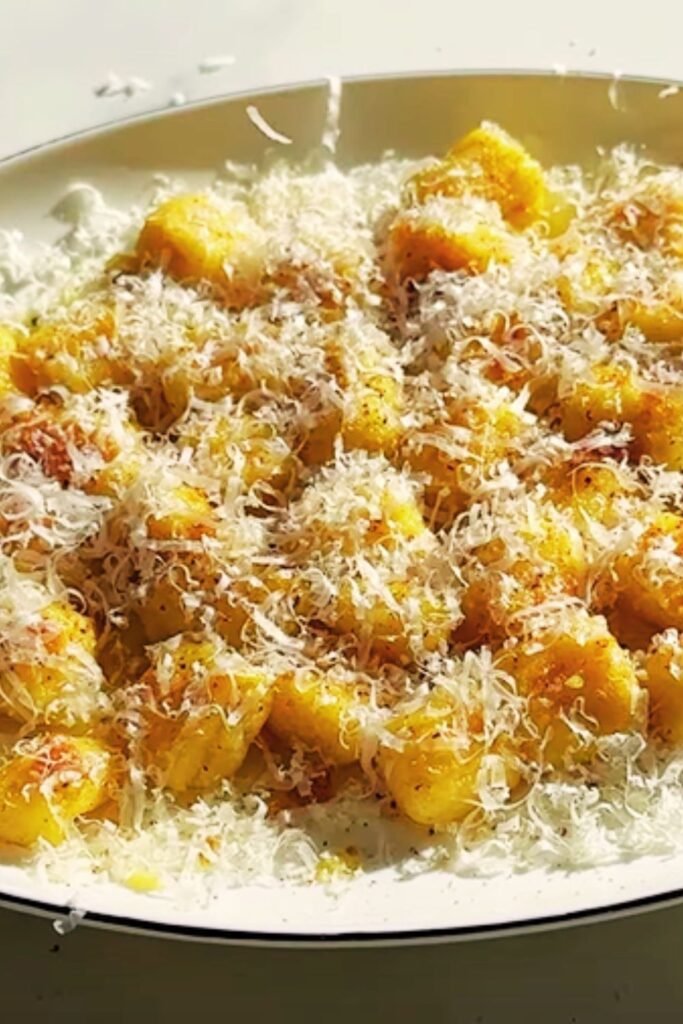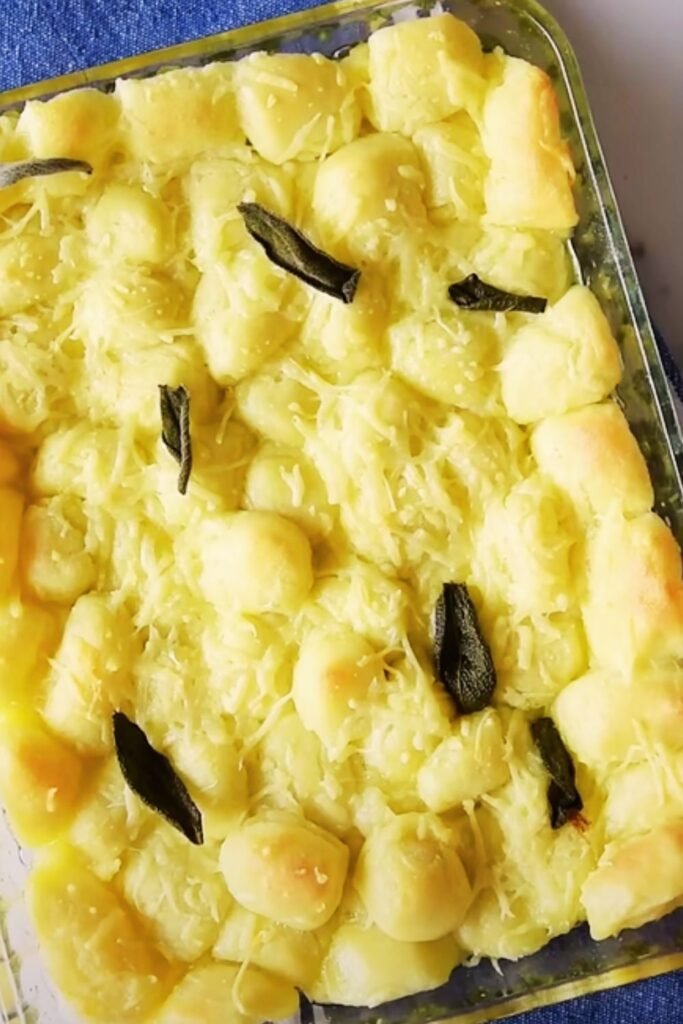When I first discovered Parisian gnocchi during my culinary travels through France, I was amazed by how different they were from their Italian cousins. These aren’t your typical potato dumplings – instead, they’re elegant, light pillows of choux pastry that melt in your mouth with an almost ethereal texture. Today, I’m excited to share everything I’ve learned about crafting these sophisticated French delicacies in your own kitchen.
Unlike traditional Italian gnocchi made from potatoes and flour, Parisian gnocchi (also known as gnocchi parisienne) are created using pâte à choux – the same pastry base used for éclairs and profiteroles. This fundamental difference creates a completely unique dining experience that’s both familiar and surprisingly sophisticated.
Understanding Parisian Gnocchi: A Culinary Definition
Parisian Gnocchi (Gnocchi Parisienne) : Light, airy dumplings made from choux pastry, typically poached and then finished with butter, cheese, or cream sauce
Pâte à Choux : A cooked pastry dough made from water, butter, flour, and eggs that creates a light, hollow structure when baked or poached
Quenelle : The traditional oval shape formed when shaping the gnocchi using two spoons
Gratin Finish : The final browning step under a broiler or in the oven that creates a golden, crispy top
The beauty of Parisian gnocchi lies in their versatility and elegant presentation. They can serve as a sophisticated side dish, a vegetarian main course, or even an impressive appetizer for dinner parties.
Essential Ingredients and Equipment
Core Ingredients
| Ingredient | Quantity | Purpose | Quality Notes |
|---|---|---|---|
| Water | 1 cup (240ml) | Pastry base | Use filtered water for best results |
| Unsalted Butter | 4 tablespoons (60g) | Fat component | European-style butter preferred |
| All-Purpose Flour | 1 cup (120g) | Structure | Sift for smoothest texture |
| Large Eggs | 3-4 eggs | Binding and leavening | Room temperature works best |
| Fine Sea Salt | 1 teaspoon | Flavor enhancement | Avoid table salt |
| Fresh Nutmeg | 1/4 teaspoon | Traditional seasoning | Freshly grated only |
| Gruyère Cheese | 1 cup (100g) grated | Finishing touch | Can substitute with Emmental |
| Heavy Cream | 1/2 cup (120ml) | Sauce base | 35% fat content minimum |
Specialized Equipment
The right tools make all the difference when creating perfect Parisian gnocchi. I’ve learned through experience that having proper equipment eliminates most common problems.
Essential Tools:
- Heavy-bottomed saucepan for choux pastry
- Wooden spoon with long handle
- Large mixing bowl
- Two tablespoons for shaping
- Large pot for poaching
- Slotted spoon for removal
- Baking dish for final preparation

Step-by-Step Preparation Method
Creating the Perfect Choux Pastry
The foundation of exceptional Parisian gnocchi starts with mastering the choux pastry. I’ve refined this technique over years of practice, and I’ll share the secrets that ensure success every time.
Step 1: Preparing the Base Begin by combining water, butter, and salt in your heavy-bottomed saucepan. Place over medium-high heat and bring to a rolling boil. The butter should be completely melted and the mixture should be bubbling vigorously. This initial heating is crucial – insufficient heat will result in heavy, dense gnocchi.
Step 2: Incorporating the Flour Remove the pan from heat and immediately dump all the flour into the hot liquid. Using your wooden spoon, stir vigorously until the mixture forms a smooth paste that pulls away from the sides of the pan. Return to low heat and continue stirring for 60-90 seconds to cook out any raw flour taste.
Step 3: Cooling the Pastry Transfer the hot pastry to your mixing bowl and let it cool for 5-7 minutes. This cooling period is essential – adding eggs to pastry that’s too hot will scramble them, ruining your gnocchi base.
Step 4: Adding the Eggs Beat in eggs one at a time, ensuring each is fully incorporated before adding the next. The pastry should become smooth and glossy, with a consistency that holds its shape when lifted with a spoon but still flows slightly. Depending on egg size and humidity, you might need 3-4 eggs total.
Step 5: Final Seasoning Fold in freshly grated nutmeg and adjust salt to taste. The finished choux pastry should be smooth, glossy, and have a pale golden color.
Shaping and Poaching Techniques

Traditional Quenelle Method: Using two tablespoons, scoop a portion of choux pastry with one spoon and use the second spoon to shape it into an elegant oval. The goal is creating uniform, football-shaped dumplings about 2 inches long.
Poaching Process: Bring a large pot of salted water to a gentle simmer – avoid a rolling boil which can break apart delicate gnocchi. Carefully lower shaped gnocchi into the water using a slotted spoon. They’ll initially sink, then float to the surface when properly cooked, typically after 8-10 minutes.
Quality Indicators: Properly cooked Parisian gnocchi will be light, airy, and slightly firm to the touch. They should hold their shape well and have a pale, uniform color throughout.
Finishing Techniques and Presentation
Classic Gratin Preparation
The final step transforms simple poached gnocchi into an elegant dish worthy of any French bistro. I prefer the traditional gratin method, which creates a beautiful contrast between the crispy golden top and the tender interior.
Sauce Preparation: In a saucepan, gently warm heavy cream with a pinch of salt and white pepper. Avoid boiling, which can cause separation. The cream should just barely simmer around the edges.
Assembly Process: Arrange poached gnocchi in a buttered baking dish, ensuring they don’t overlap. Pour the warm cream over the gnocchi, then generously sprinkle with grated Gruyère cheese. The cheese should cover the surface completely for optimal browning.
Final Browning: Place under a preheated broiler for 3-5 minutes until the top is golden brown and bubbling. Watch carefully to prevent burning – the transformation from pale to golden happens quickly.
Nutritional Information and Dietary Considerations
| Nutrient | Per Serving (4 servings) | Daily Value % |
|---|---|---|
| Calories | 285 | 14% |
| Total Fat | 18g | 23% |
| Saturated Fat | 11g | 55% |
| Cholesterol | 165mg | 55% |
| Sodium | 420mg | 18% |
| Carbohydrates | 22g | 8% |
| Protein | 12g | 24% |
| Calcium | 220mg | 22% |
| Iron | 2.1mg | 12% |
Dietary Adaptations:
Gluten-Free Version: Substitute all-purpose flour with a gluten-free flour blend specifically designed for pastry. The texture will be slightly different but still delicious.
Dairy-Free Option: Replace butter with high-quality plant-based butter and use coconut cream instead of heavy cream. Nutritional yeast can substitute for cheese.
Lower-Fat Alternative: Reduce butter by half and use milk instead of cream for the sauce. The result will be lighter but less rich.
Serving Suggestions and Pairings

Parisian gnocchi shine as both a standalone dish and as an accompaniment to other French classics. My favorite presentations include:
As a Main Course: Serve with a simple green salad dressed with vinaigrette and crusty French bread. The contrast between the rich, creamy gnocchi and crisp, acidic salad creates perfect balance.
As a Side Dish: These pair beautifully with roasted chicken, beef bourguignon, or grilled fish. The neutral flavor profile complements rather than competes with main proteins.
Elegant Appetizer: Prepare smaller portions in individual ramekins for an impressive dinner party starter. Garnish with fresh herbs like chives or parsley for color and freshness.
Seasonal Variations:
- Spring: Add fresh peas and mint
- Summer: Incorporate roasted tomatoes and basil
- Fall: Mix in sautéed mushrooms and thyme
- Winter: Include roasted butternut squash and sage
Troubleshooting Common Issues
Through my years of making Parisian gnocchi, I’ve encountered and solved numerous common problems. Here are the solutions to the most frequent issues:
Dense, Heavy Gnocchi: This usually results from insufficient cooking of the initial flour paste or adding eggs to pastry that’s too hot. Ensure the pastry pulls cleanly from pan sides and cool adequately before adding eggs.
Gnocchi That Fall Apart During Poaching: Typically caused by pastry that’s too wet or water that’s boiling too vigorously. The choux should hold its shape when piped, and poaching water should barely simmer.
Lumpy Pastry: Results from adding flour to liquid that isn’t hot enough or insufficient stirring. The initial liquid must be at a rolling boil, and flour incorporation must be immediate and vigorous.
Inconsistent Sizes: Practice the quenelle technique using two spoons of identical size. Consistent portioning ensures even cooking and professional presentation.
Storage and Reheating Guidelines
Fresh Storage: Uncooked choux pastry can be refrigerated for up to 24 hours. Cover tightly to prevent drying out.
Poached Gnocchi: Once poached, gnocchi can be stored in refrigerated water for up to 2 days. This actually improves their texture slightly.
Finished Dish: Completed gratin-style gnocchi are best served immediately but can be refrigerated for up to 3 days. Reheat gently in a low oven to prevent overcooking.
Freezing Options: Shaped, uncooked gnocchi freeze excellently for up to 3 months. Freeze on a baking sheet first, then transfer to bags. Cook directly from frozen, adding 2-3 minutes to poaching time.
Advanced Techniques and Variations
Once you’ve mastered the basic recipe, numerous sophisticated variations become possible. My favorites include:
Herb-Infused Variations: Incorporate finely chopped fresh herbs directly into the choux pastry. Chives, parsley, and tarragon work particularly well, adding both flavor and visual appeal.
Cheese Integration: Fold grated Parmesan or Gruyère directly into the pastry for extra richness. Reduce the amount used for finishing to maintain balance.
Seafood Enhancement: Add finely diced cooked shrimp or crab to the pastry for an elegant seafood version. Finish with a light cream sauce flavored with white wine and fresh dill.
Vegetable Incorporation: Puréed roasted vegetables like butternut squash or sweet potato can replace up to 25% of the flour, creating colorful and flavorful variations.
Questions and Answers
Q: Can I make Parisian gnocchi ahead of time for dinner parties?
Yes, this is actually one of their greatest advantages for entertaining. I recommend preparing the gnocchi through the poaching stage up to two days ahead. Store them in their poaching liquid in the refrigerator. When ready to serve, simply drain, arrange in your baking dish with sauce and cheese, then broil until golden. This actually improves their texture slightly and makes dinner party preparation much more manageable.
Q: Why do my gnocchi sometimes sink and never float during poaching?
This typically indicates that your choux pastry was either too wet or not properly cooked initially. The pastry should be thick enough to hold its shape when piped, and the initial flour-cooking step must be thorough. If gnocchi don’t float after 12-15 minutes, they’re likely too dense. Check your technique, particularly the flour-cooking phase and egg incorporation ratios.
Q: What’s the difference between Parisian gnocchi and regular Italian gnocchi in terms of cooking technique?
The techniques are completely different. Italian gnocchi use a pasta-making approach with kneading and rolling, while Parisian gnocchi use pastry techniques. Italian versions require careful handling to avoid toughness, while Parisian gnocchi benefit from vigorous mixing during the choux-making process. The cooking methods differ too – Italian versions need brief boiling, while Parisian gnocchi require longer, gentler poaching.
Q: Can I use different types of cheese for the gratin topping?
Absolutely! While Gruyère is traditional and provides the best flavor balance, Emmental, aged Cheddar, or even Parmesan work well. I avoid very soft cheeses like Brie or Camembert as they don’t brown properly. For best results, use cheeses that melt smoothly and brown nicely under the broiler. A combination of Gruyère and Parmesan creates exceptional depth of flavor.
Q: My choux pastry sometimes curdles when I add the eggs. How can I prevent this?
Curdling happens when the pastry is still too hot when eggs are added. After cooking the flour mixture, transfer it to a bowl and let it cool for at least 5-7 minutes – you should be able to hold your hand on the bottom of the bowl comfortably. Add eggs one at a time, beating thoroughly between additions. If curdling does occur, continue beating vigorously; the mixture usually comes back together.
Q: How do I know when the choux pastry has the right consistency?
Perfect choux pastry should be smooth, glossy, and thick enough to hold soft peaks when lifted with a spoon, but still flow slightly. It should coat the spoon heavily but not be so stiff that it’s difficult to mix. When piped or shaped, it should hold its form without spreading excessively. The color should be pale golden from the egg content.
Q: Can I make mini versions for appetizers, and how would I adjust the cooking time?
Mini Parisian gnocchi make excellent appetizers! Shape them about half the normal size using teaspoons instead of tablespoons. Reduce poaching time to 5-7 minutes – they’ll still float when done. For serving, arrange in small individual gratin dishes or on a large platter. The broiling time remains the same since you’re only browning the surface.
Q: What should I do if my finished gnocchi are too salty?
If the gnocchi themselves are oversalted, there’s limited correction possible, but you can balance the overall dish. Use unsalted butter for the gratin dish, choose a mild cheese, and serve with a simple green salad dressed with lemon vinaigrette. The acidity and freshness help counteract excessive saltiness. For future batches, remember that both the poaching water and cheese add salt, so season the initial pastry conservatively.
Q: Is there a way to make these healthier without sacrificing too much richness?
Yes, several modifications work well. Replace half the butter with olive oil in the initial pastry, use milk instead of heavy cream for the sauce, and reduce the cheese quantity while choosing a sharp variety for more flavor impact. You can also add finely chopped herbs or a small amount of Dijon mustard to boost flavor without calories. Serving alongside plenty of vegetables helps create a more balanced meal overall.